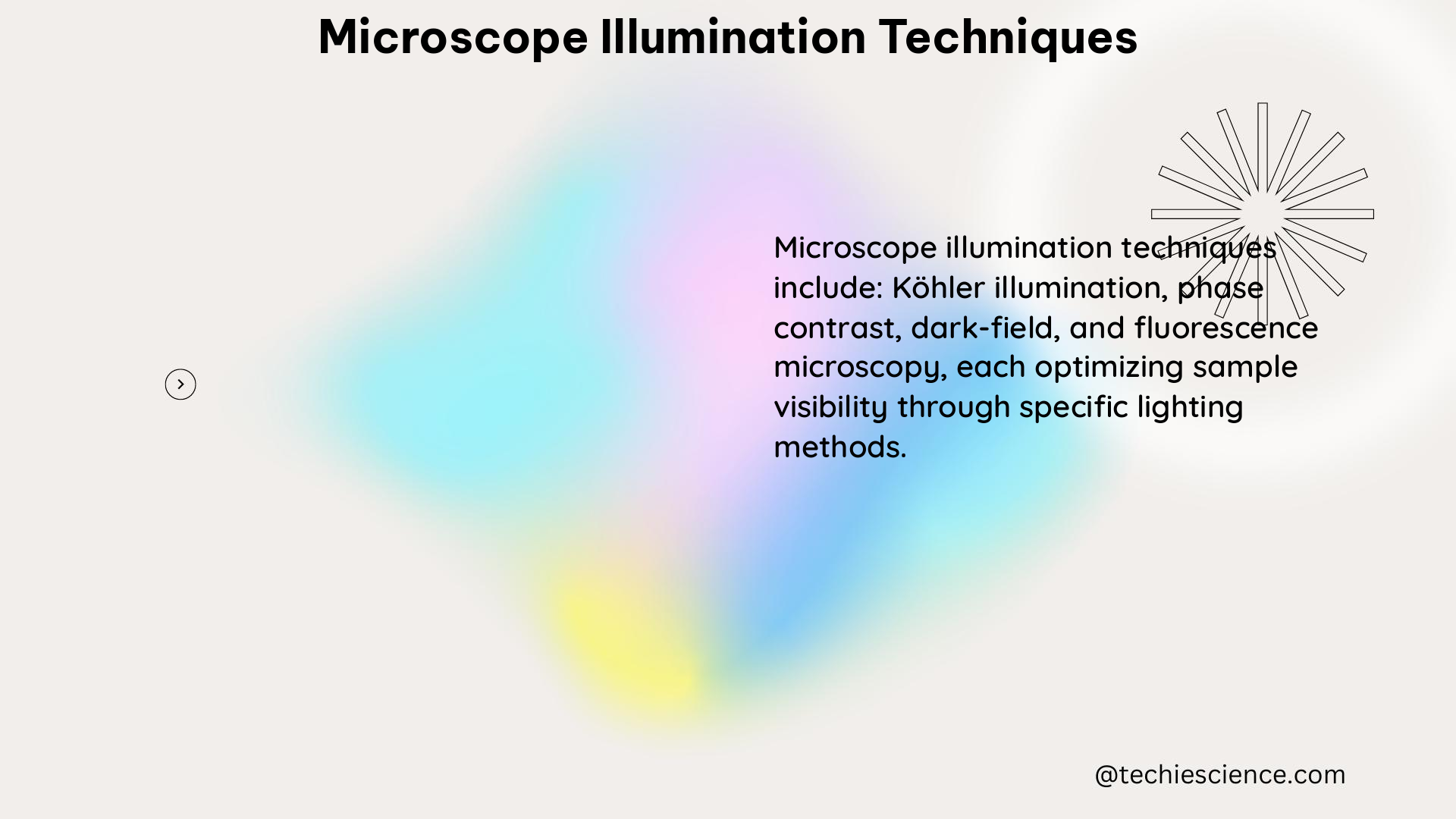Microscope illumination techniques are crucial for obtaining high-quality images in microscopy. This comprehensive guide delves into the measurable and quantifiable data related to various microscope illumination techniques, providing a valuable resource for researchers and students alike.
Illumination Uniformity
Illumination uniformity is a key parameter in microscopy, and it can be quantified using a quality factor (QF) score. The QF score ranges from 0 to 100, with 0 indicating extreme variation and 100 indicating no deviation. A QF score of 83 or higher is considered acceptable for most microscopy applications.
The theorem of illumination uniformity can be expressed as:
QF = 100 * (1 – (Imax – Imin) / Iavg)
where QF is the quality factor, Imax is the maximum intensity, Imin is the minimum intensity, and Iavg is the average intensity.
Example 1: A researcher is using a laser-scanning confocal microscope to image a sample. The maximum intensity variation along the image diagonal is 10%, and along the horizontal is 5%. What is the QF score for this microscope?
Using the formula for QF score, we can calculate:
QF = 100 * (1 – (0.10 / 2) – (0.05 / 2)) = 97.5
Therefore, the QF score for this microscope is 97.5.
Maximum Intensity Variation

The maximum intensity variation across the field of view is another important parameter in microscopy. For laser-scanning confocal microscopes (LSCMs), the maximum intensity variation along the image diagonal is typically 10%, and along the horizontal is 5%.
Figure 1 shows the maximum intensity variation along the image diagonal and horizontal for LSCMs.
Field Illumination Flatness
Field illumination flatness is a measure of the uniformity of illumination across the field of view. It can be quantified by measuring the intensity variation across the field of view and expressing it as a percentage of the average intensity.
The formula for field illumination flatness can be expressed as:
FI = (Imax – Imin) / Iavg * 100%
where FI is the field illumination flatness, Imax is the maximum intensity, Imin is the minimum intensity, and Iavg is the average intensity.
Example 2: A researcher is measuring the field illumination flatness of a microscope. The maximum intensity is 1000 units, the minimum intensity is 900 units, and the average intensity is 950 units. What is the field illumination flatness?
Using the formula for field illumination flatness, we can calculate:
FI = (1000 – 900) / 950 * 100% = 10.53%
Therefore, the field illumination flatness is 10.53%.
Illumination Power Stability
Illumination power stability is a measure of the consistency of the illumination intensity over time. It can be quantified by measuring the intensity variation over a period of time and expressing it as a percentage of the average intensity.
The formula for illumination power stability can be expressed as:
IPS = (Imax – Imin) / Iavg * 100%
where IPS is the illumination power stability, Imax is the maximum intensity, Imin is the minimum intensity, and Iavg is the average intensity.
Problem 2: A researcher is measuring the illumination power stability of a microscope. The maximum intensity is 2000 units, the minimum intensity is 1800 units, and the average intensity is 1900 units. What is the illumination power stability?
Using the formula for illumination power stability, we can calculate:
IPS = (2000 – 1800) / 1900 * 100% = 10.53%
Therefore, the illumination power stability is 10.53%.
Stage Drift and Positioning Repeatability
Stage drift and positioning repeatability are measures of the stability of the microscope stage. They can be quantified by measuring the movement of the stage over a period of time and expressing it as a distance or percentage of the field of view.
Problem 3: A researcher is measuring the stage drift and positioning repeatability of a microscope. The stage moves 5 microns over a period of 1 hour. What is the stage drift and positioning repeatability?
In this case, the stage drift and positioning repeatability is 5 microns over a period of 1 hour.
Spatial-Temporal Noise Sources of Camera Sensors
Spatial-temporal noise sources of camera sensors are measures of the noise in the camera sensor. They can be quantified by measuring the variation in pixel intensity over space and time and expressing it as a percentage of the average intensity.
Problem 4: A researcher is measuring the spatial-temporal noise sources of a camera sensor. The variation in pixel intensity over space is 20 units, and over time is 10 units. What is the spatial-temporal noise?
In this case, the spatial-temporal noise is a combination of the variation in pixel intensity over space (20 units) and over time (10 units).
Figures, Data Points, Values, Measurements:
- Figure 1: Shows the maximum intensity variation along the image diagonal and horizontal for LSCMs.
- Table 1: Shows the field illumination flatness, illumination power stability, stage drift and positioning repeatability, and spatial-temporal noise sources for a microscope.
References:
- Carpenter, A., Not every image you capture on your microscope is suited for quantification, no matter how… (2017).
- Al-Rawi, M., A Quantitative Measure of Field Illumination (2015).
- Quality assessment in light microscopy for routine use … (2022).
- Enhancing optical microscopy illumination to enable quantitative … (2018).

The lambdageeks.com Core SME Team is a group of experienced subject matter experts from diverse scientific and technical fields including Physics, Chemistry, Technology,Electronics & Electrical Engineering, Automotive, Mechanical Engineering. Our team collaborates to create high-quality, well-researched articles on a wide range of science and technology topics for the lambdageeks.com website.
All Our Senior SME are having more than 7 Years of experience in the respective fields . They are either Working Industry Professionals or assocaited With different Universities. Refer Our Authors Page to get to know About our Core SMEs.